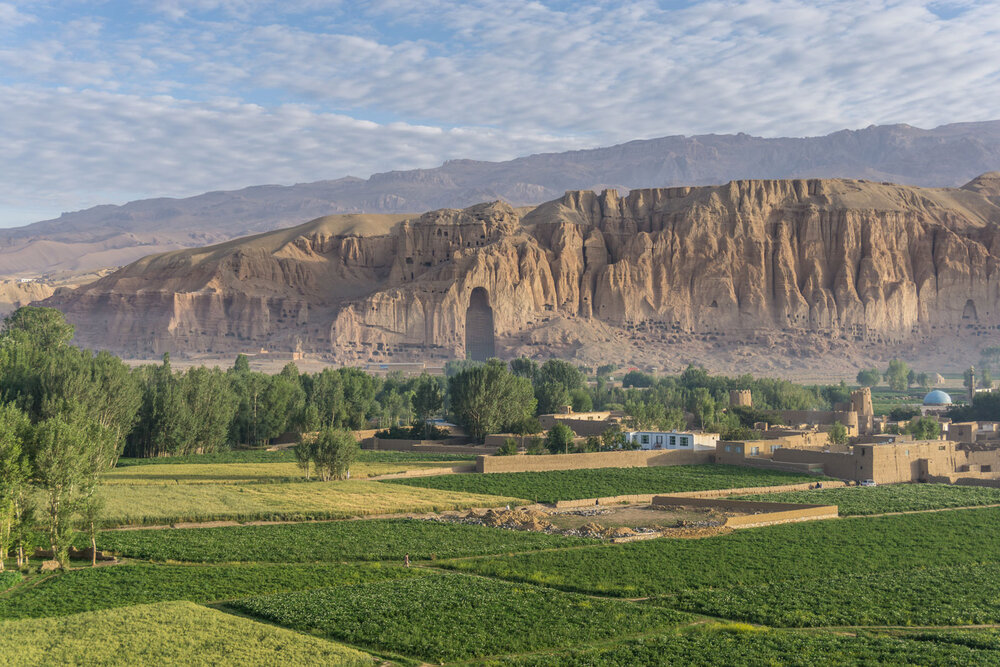Iran’s memories in Afghanistan: two sisters apart

TEHRAN – For years, many people including Iranians, have dreamed of visiting Afghanistan and viewing its colorful sights, a beautiful country that has been unrested for many years and engulfed in a war that is getting fiercer every day.
With roots dating back thousands of years and many similarities in dialects and history, Iran and Afghanistan share strong cultural ties.
Even though these two countries are separate now, they used to be one united empire once, which means that a lot of historical places and monuments have been left in Afghanistan belonging to ancient Iran.
There is hope among Iranians that walk under the blue sky of Herat, Kandahar, Kabul, and Balkh with their neighbors one day.
In the absence of a possibility of visiting these places and attractions, we can explore a list of Persian historical monuments and sites preserved in Afghanistan.
Herat
Afghanistan’s third-largest city, Herat, situated just 80 miles from the Iranian border, was the capital of the Persian Empire.
Dating back to ancient times, the city was known as Haraiva during the Achaemenid Empire (ca. 550-330 BC).
Herat became a provincial capital during the Safavid era (1501-1736). The Persian king Abbas was born in Herat, and in Safavid texts, Herat is known as a'zam-i bilad-i Iran, meaning "the greatest of Iranian cities". In the 16th century, a number of future Safavid rulers, from Tahmasp to Abbas I, served as governors of Herat in their youth.
Bamyan
Bamyan was one of the main states of Iran during the Achaemenid period and was considered one of the important centers of Buddhism during the Kushan Empire.
It was a place where East met West, and its archeology contains influences from Greek, Turkic, Persian, Chinese and Indian cultures. The region is one of Afghanistan’s most touristic places.
Along with the Buddhas of Bamiyan, two 6th-century monumental statues of Gautama Buddha carved into the side of a cliff in the Bamyan valley, which was destroyed by the Taliban, a number of Persian temples dating back to the Sassanid era (224-651 CE) were also among the attractions of Bamyan.
Aq Koprok Archaeological Sites
Aq Koprok is a collection of four archaeological sites in Afghanistan dating back to the prehistoric period, which spans from Paleolithic time to the Sassanid period.
Ghazni
Located in southeastern Afghanistan, Ghazni, historically known as Ghaznin or Ghazna, was conquered by the Achaemenid king Cyrus II and incorporated into the Persian Empire in the 6th century BC.
The city was the capital of Ghaznavids, a Persian Muslim dynasty from 977 to 1163. In the first decades of the 11th century, Ghazni was the most important center of Persian literature.
For centuries, travelers and archeologists have been drawn to beautiful places like the Ghazni Citadel, the Ghazni Minarets, and the Palace of Sultan Masoud III, all built during the time of Iranian rulers.
Taq Bost
The structure is a large brick arch that is cut with bricks on both sides and is about 25 meters. The monument was built during Ghaznavid-era and was restored over time.
The arch was the entrance gate to the historic city of Bost or Lashkar Gah, which was the winter capital at the time.
Lashkari Bazaar
Near the city of Lashkargah, there are the remains of some places known as Lashkari Bazaar or Al-Asqar, meaning the area of the troops.
Located on the banks of the Helmand River, one of the palaces known as Southern Castle has remained a little intact.
Based on both textual sources and finds made during excavations at the site, scholars attribute the palace to Ghaznavid king Mahmud I and date it to the early years of his reign (r. 998-1030).
The palace is situated at a point on the Helmand approximately eight kilometers north of the Citadel of Bust where the riverbank forms a natural corner so that two facades of the palace afford riverfront views.
The plan is roughly rectangular and is aligned nearly perfectly with the cardinal directions. Its main axis runs from south to north. It was constructed largely of mud-brick, with baked brick used for the most monumental and important components.
Even though the palace has been destroyed, looted, rebuilt, and restored a few times, there are still murals and paintings inside that attract visitors.
Persian elite’ mausoleums and tombs
Afghanistan is the final resting place of many Iranian poets, scientists, artists, and kings.
The mausoleum of Mahmud of Ghazni, who was the first independent ruler of Ghaznavids (999-1030) is six kilometers from the city of Ghazni.
Hakim Abul-Majd Sanai Ghaznavi, more commonly known as Sanai, was a Persian poet from Ghazni who lived his life in the Ghaznavid Empire at the time of its golden age, in medieval Khorasan, which is now located in Afghanistan. He was buried in Ghazni.
Iranian poet and theologian Naser Khosrow Qubadiani (1004-c.1072/77), who is known for Safar-nameh (“Book of Travel”), a diary describing his seven-year journey is buried on a hill in Badakhshan.
The tomb of Khwaja Abdullah Ansari (1006–1088), a devout Sufi, known as “The Pious One” during his lifetime, is in Herat.
The mausoleum of the Persian scholar, polymath, and historian, Abu Rayhan al-Biruni, who became the most original polymath the Islamic world had ever known, is located in the city of Ghazni.
ABU/MG

Leave a Comment